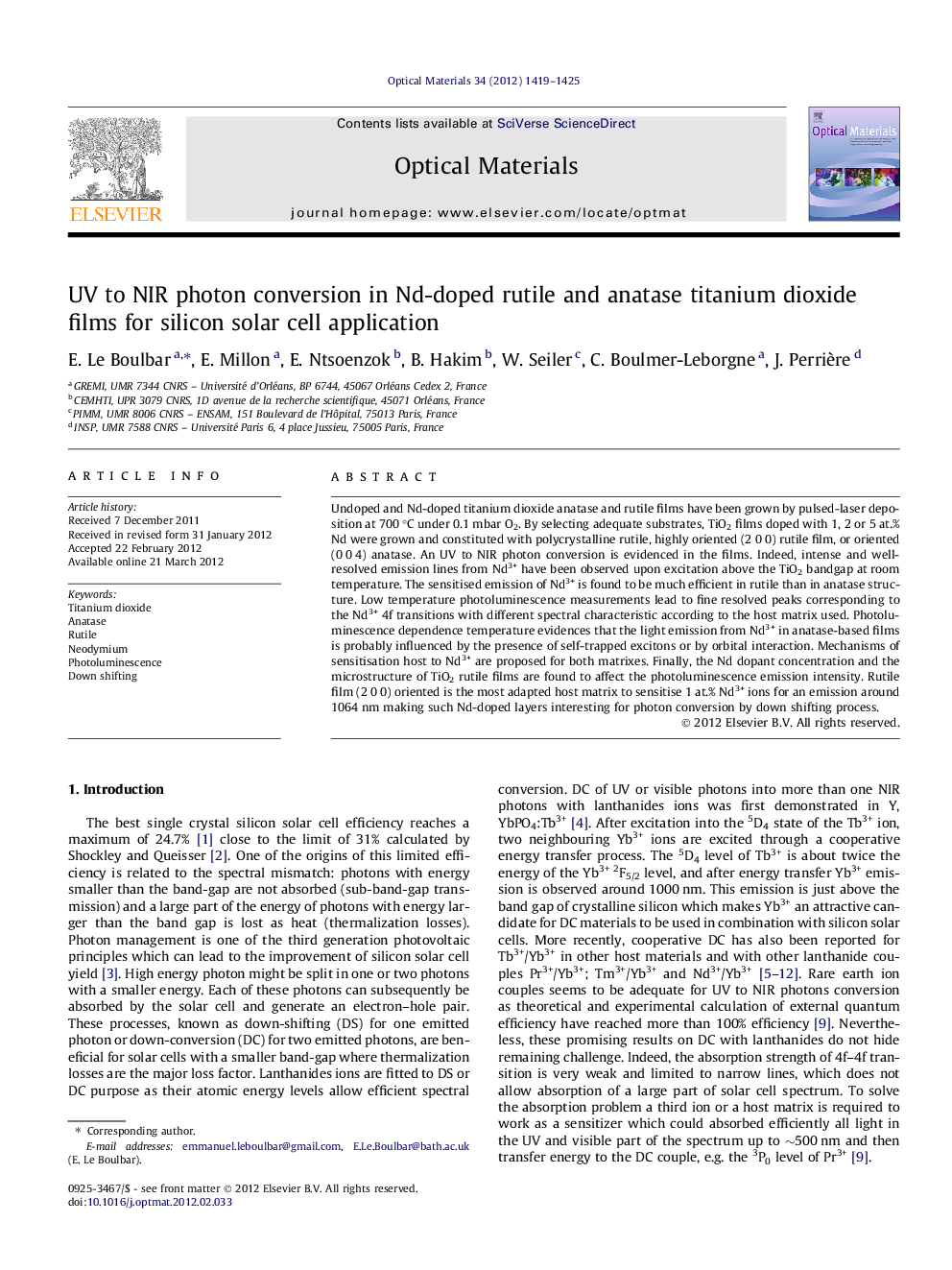| Article ID | Journal | Published Year | Pages | File Type |
|---|---|---|---|---|
| 1495045 | Optical Materials | 2012 | 7 Pages |
Undoped and Nd-doped titanium dioxide anatase and rutile films have been grown by pulsed-laser deposition at 700 °C under 0.1 mbar O2. By selecting adequate substrates, TiO2 films doped with 1, 2 or 5 at.% Nd were grown and constituted with polycrystalline rutile, highly oriented (2 0 0) rutile film, or oriented (0 0 4) anatase. An UV to NIR photon conversion is evidenced in the films. Indeed, intense and well-resolved emission lines from Nd3+ have been observed upon excitation above the TiO2 bandgap at room temperature. The sensitised emission of Nd3+ is found to be much efficient in rutile than in anatase structure. Low temperature photoluminescence measurements lead to fine resolved peaks corresponding to the Nd3+ 4f transitions with different spectral characteristic according to the host matrix used. Photoluminescence dependence temperature evidences that the light emission from Nd3+ in anatase-based films is probably influenced by the presence of self-trapped excitons or by orbital interaction. Mechanisms of sensitisation host to Nd3+ are proposed for both matrixes. Finally, the Nd dopant concentration and the microstructure of TiO2 rutile films are found to affect the photoluminescence emission intensity. Rutile film (2 0 0) oriented is the most adapted host matrix to sensitise 1 at.% Nd3+ ions for an emission around 1064 nm making such Nd-doped layers interesting for photon conversion by down shifting process.
► TiO2:Nd3+ anatase and rutile thin films as UV to NIR photon conversion layers. ► Nd3+ photoluminescence seen after TiO2 band gap sensitisation in both case. ► Qualitative photoluminescence at low temperature showed Nd3+ dopant is inserted in a different environment. ► Quantitative PL showed a more efficient matrix to Nd3+ energy transfer in rutile epitaxially grown.
